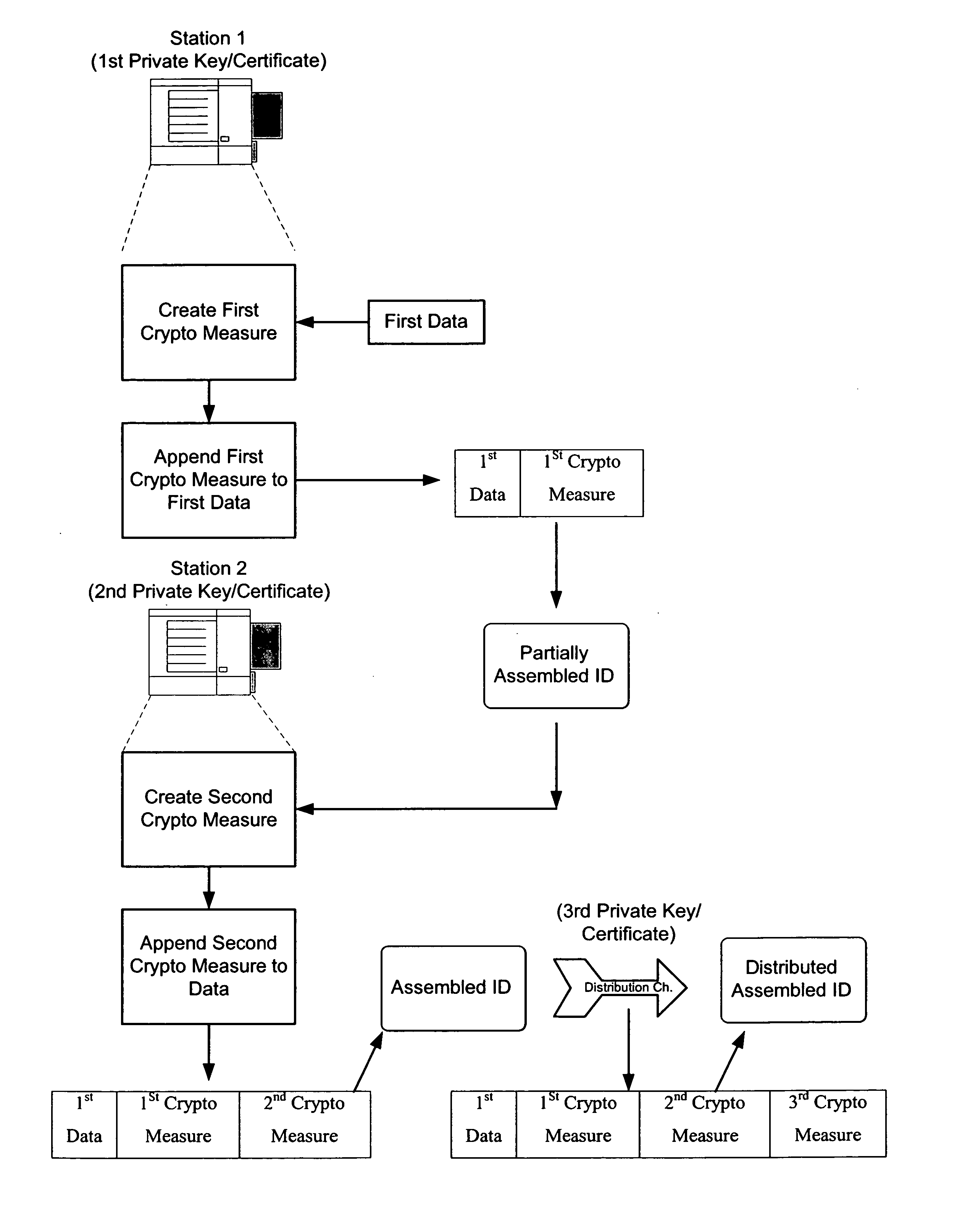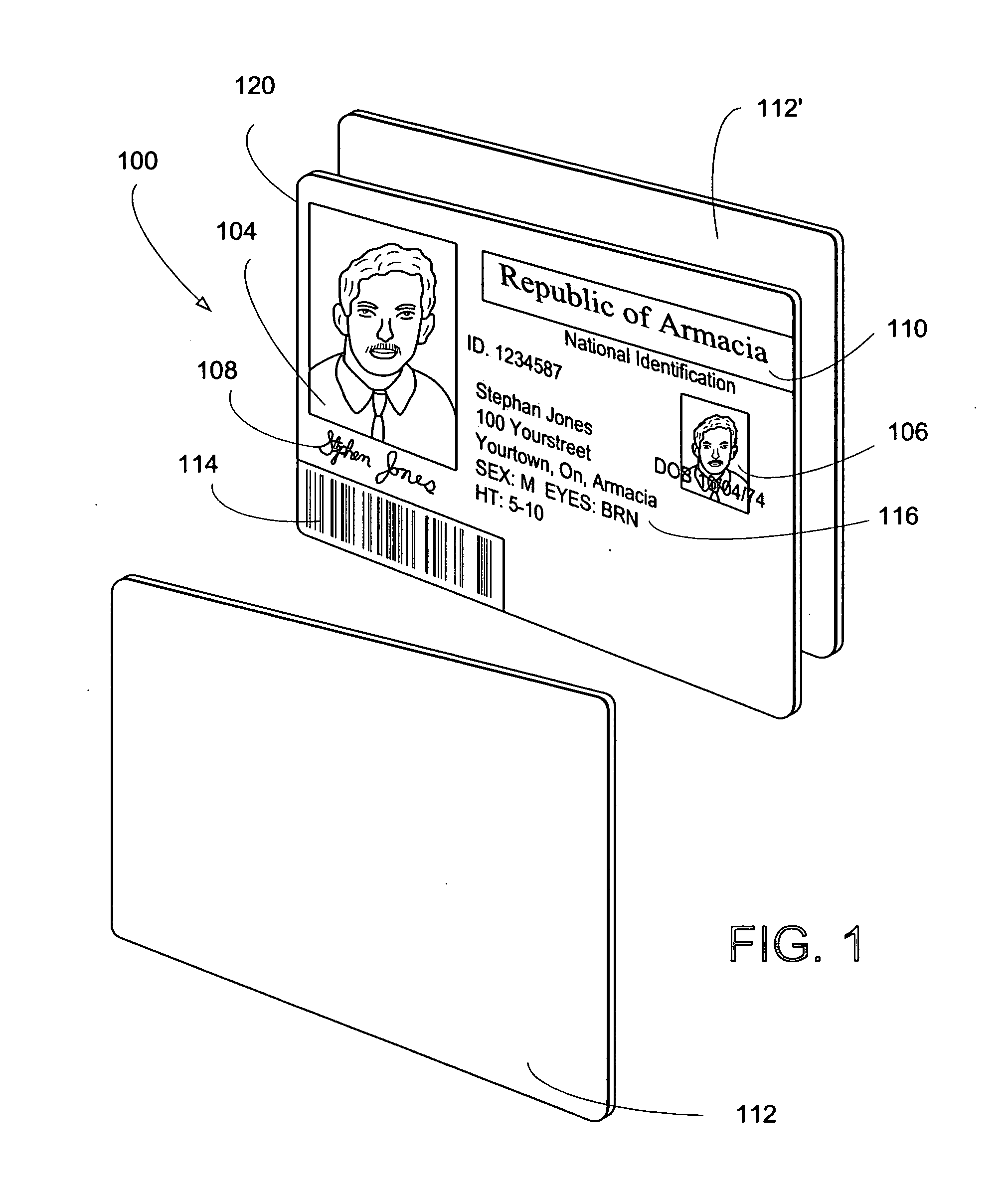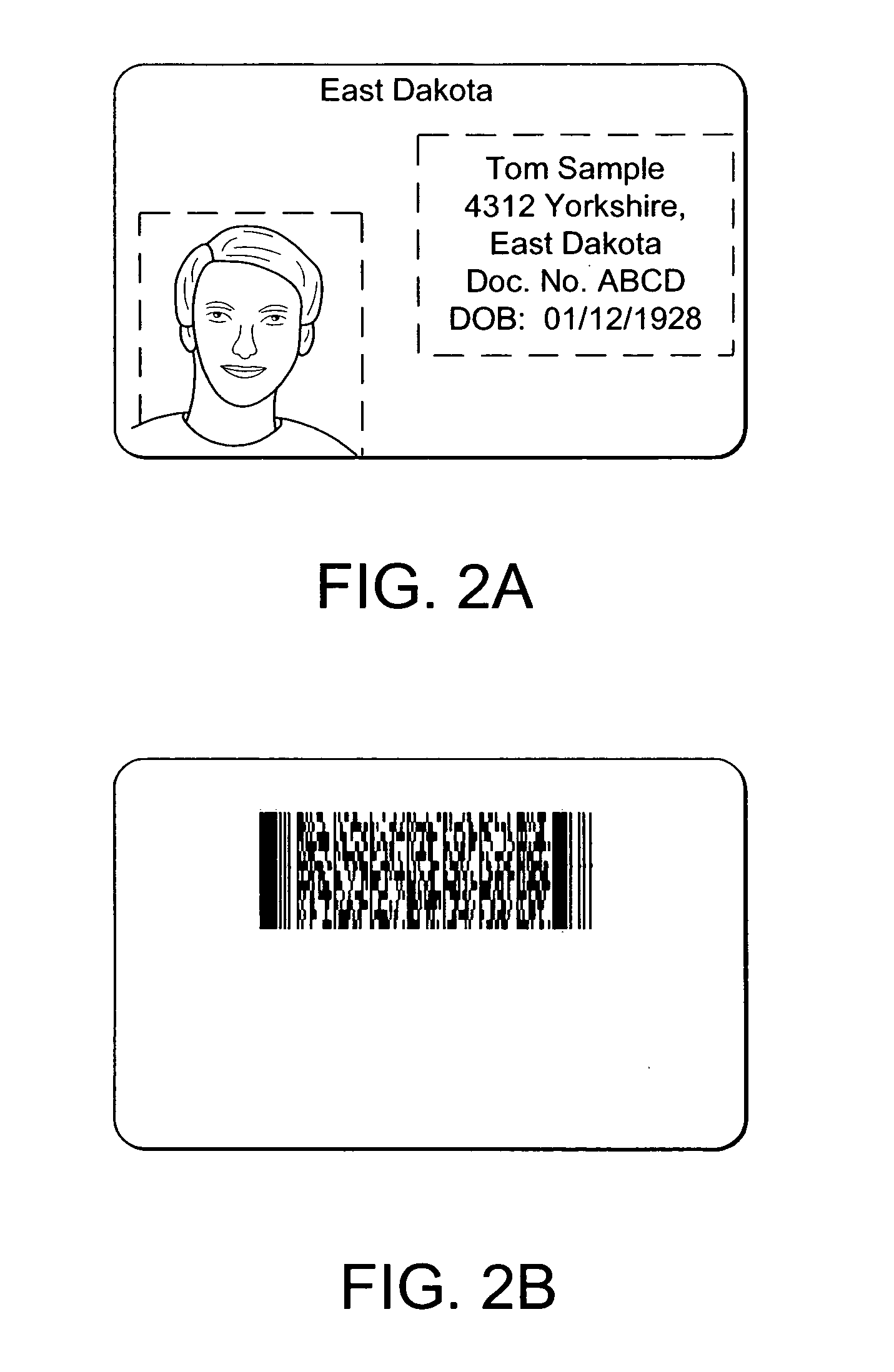Protection of identification documents using open cryptography
a technology of identification documents and cryptography, applied in the field of identification documents, can solve the problems of difficult access to bulky or expensive special equipment, short time, li class, etc., and achieve the effect of reducing the chances of loss or theft, ensuring security, and ensuring security
- Summary
- Abstract
- Description
- Claims
- Application Information
AI Technical Summary
Benefits of technology
Problems solved by technology
Method used
Image
Examples
Embodiment Construction
[0054] The following description details various embodiments of secure identification document production. This description also details methods to reliably trace and verify fabrication details associated with an identification document.
[0055] Front and backsides of an identification document are illustrated, respectively, in FIGS. 2a and 2b. The illustrated identification document includes a plurality of features including a photographic representation of an authorized bearer of the document, so-called fixed information (e.g., information that remains the same from document to document, like issuing jurisdiction, seals, graphics, artwork, etc.) and so-called variable information (e.g., information that is unique to the identification document or the bearer of the identification document, like document number, birth date, address, biometric information, etc.). The document preferably includes some clear-text information carried, e.g., by a two-dimensional symbology (e.g., PDF417 or...
PUM
 Login to View More
Login to View More Abstract
Description
Claims
Application Information
 Login to View More
Login to View More - R&D
- Intellectual Property
- Life Sciences
- Materials
- Tech Scout
- Unparalleled Data Quality
- Higher Quality Content
- 60% Fewer Hallucinations
Browse by: Latest US Patents, China's latest patents, Technical Efficacy Thesaurus, Application Domain, Technology Topic, Popular Technical Reports.
© 2025 PatSnap. All rights reserved.Legal|Privacy policy|Modern Slavery Act Transparency Statement|Sitemap|About US| Contact US: help@patsnap.com



